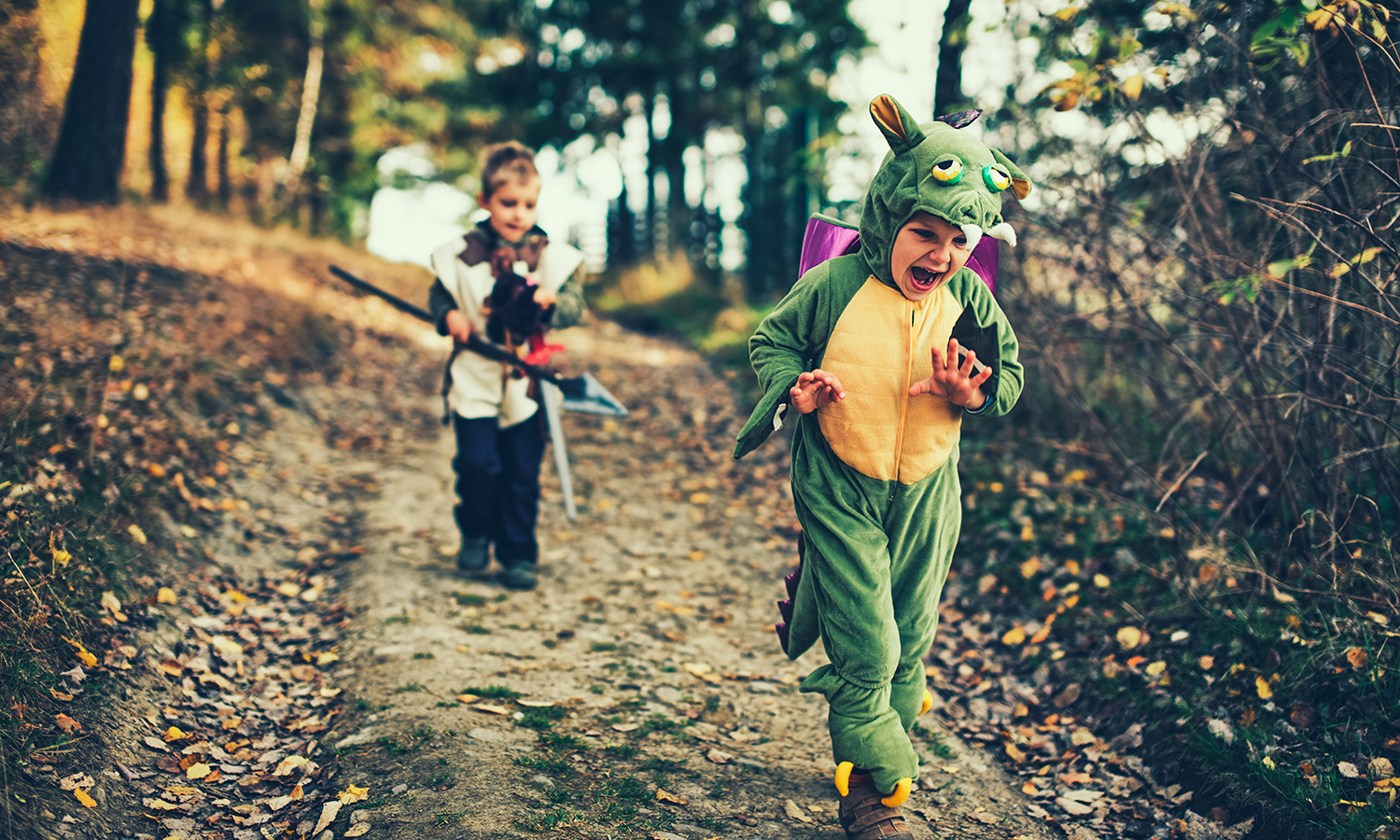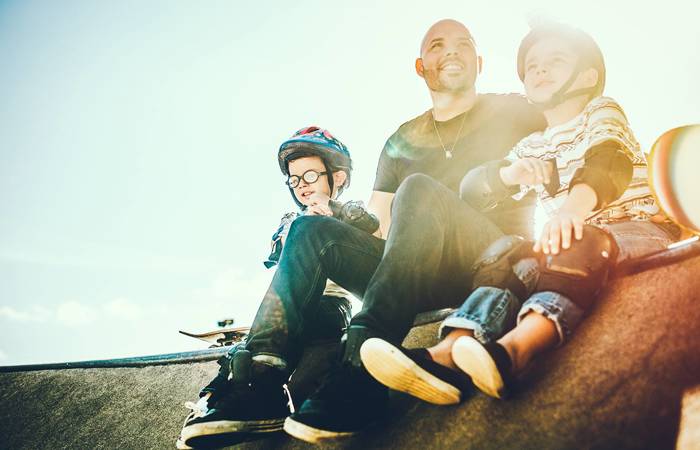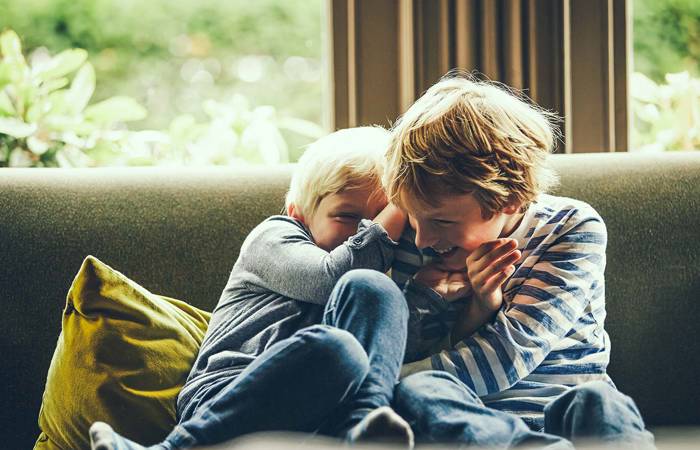Like what you see?
Sign up to receive more free parenting advice.
Thank you for subscribing to our newsletter!
Child Development

Credit: iStock.com/Imgorthand
Speaker, author and academic Dr Michael Nagel, continues his exploration of gender differences with a closer look at boys’ behaviour and opens the door to a greater appreciation for how we parent, educate, and support our children.
For many mums, watching a group of boys jumping on top of each other with ferocious roars or mimicking a gun by using a stick spells trouble.
Odds are that mum will tell the boys to ‘stop before somebody gets hurt!’, however, stopping this example of playful aggression robs those boys from engaging in perfectly natural, and developmentally desirable, behaviour.
As someone who has spent most of his professional life studying how children develop and learn I have often been asked by parents, especially mums, why children, especially boys, can be so aggressive? The importance of play has a long history in child development and education literature and is a cornerstone of healthy development.
Through playful experiences young children engage and enhance aspects of creative expression, language, cognitive competence, social skills, and physical development.
There is an abundance of evidence identifying play as more than just an unimportant pastime. It is an integral activity for all manner of social, physical, cognitive and emotional development.
What is playful aggression?
Significantly, playful aggression is one kind of playful behaviour that often creates a degree of discomfort for some adults due to misunderstanding the differences between this type of play and serious aggression. So, what exactly is playful aggression?
One of the best definitions I have come across identifies playful aggression as “verbally and physically cooperative play behaviour involving at least two children, where all participants enjoyably and voluntarily engage in reciprocal role-playing that includes aggressive make-believe themes, actions, and words; yet lacks intent to harm either emotionally or physically.”1
In simpler terms, playful aggression is a type of positive and enjoyable social play. It can include mock fighting, chasing one another, rough and tumble play, superhero play, and wrestling whereby children engage in such behaviours but not at the expense of hurting one another in any way.
Much of playful aggression also occurs as a form of pretend play and pretend play is considered to be beneficial for children as it encompasses complex behaviours involving many areas of the brain and is an important aspect of healthy overall development.
Playful aggression as pretend play is especially significant for boys who tend to be more physical in how they announce themselves in the world and in how they play.
Playful aggression teaches boys how to get along with one another, how to make and play within a rule structure and how to actually recognise the difference between playful and harmful behaviour.Dr Michael Nagel
Can girls be aggressive?
It should not come as a surprise that boys are aggressive in how they play and engage with the world. Not all boys, but a good proportion! It is important to remember that not all boys are the same and as such some boys may limit their participation in, or avoid, playful aggression. For those boys this is just a question of play preference at the nexus of personality and temperament traits requiring other boys to respect that choice and adults to be mindful of ensuring all play needs are met.
It is important to remember that girls can be aggressive too. However, aggression for boys often equals fun with friends, while for girls aggression doesn’t build friendships, it destroys them.
Why is playful aggression important?
Again, there is a large body of evidence identifying differences in types of play between boys and girls and the benefits of playful aggression for boys extends beyond simple physical activity.
Playful aggression provides boys with opportunities to explore their world with a sense of empowerment and control. Playful aggression also provides experiences that allow for immediate feedback for some of the brain areas that regulate social behaviour and general cognition. In other words, playful aggression provides boys with physical activity for not only fostering relationships, but also developing aspects of the mind.
The importance of playful aggression as a mechanism for fostering positive relationships with peers and emotional development cannot be understated. Playful aggression facilitates opportunities for boys to enhance their capacity to monitor and read facial expressions, verbalisations and inferences about intent while also developing an awareness of establishing relationship hierarchies.
For boys, relationship hierarchies play an important role in emotional and social development and such hierarchies are evident in numerous facets of society. Significantly, such hierarchies are a healthy aspect of development that are often given the ill-informed and misguided label of ‘toxic masculinity’ with little understanding of the overall benefits.
Playful aggression teaches boys how to get along with one another, how to make and play within a rule structure and how to actually recognise the difference between playful and harmful behaviour.
Preventing boys from engaging in playful aggression may actually increase the likelihood that any suppressed aggression will manifest itself in less healthy and beneficial ways.
Perhaps one of the reasons some adults wish to restrict, regulate, or eliminate playful aggression altogether, is due to an inadequate understanding of its benefits coupled with an inability to tell the difference between playful aggression and serious, or harmful, aggression.
When should adults intervene?
The benefits of playful aggression, far outweigh any assumed consequences or over anxious concerns about harm.
Significantly, there are real differences between playful aggression and serious aggression. During playfully aggressive activities boys are generally smiling and having a good time as opposed to displaying signs of distress.
Boys who engage in playful aggression are willing participants and eager to play through contact that is relatively gentle. They take turns attacking and being attacked and show great care in not pushing or hitting too hard in comparison to serious aggression that is about trying to hurt someone.
Finally, if an adult is not sure whether they are seeing aggression that is playful or serious all they have to do is ask whether everyone is having fun or not; boys are very good at articulating the difference between things that are fun and things that are not. This is a good reminder that like many other activities, playful aggression requires a degree of supervision, albeit one that provides boys freedom from overzealous adult interference.
Ensuring that adults do not overly monitor and/or interfere when boys are engaging in playful aggression is very important. Left to their own devices, playful aggression allows for boy to exercise their bodies while simultaneously developing a vast array of social skills.
Engaging in playful aggression independently provides opportunities for problem solving, emotional regulation and self-correcting one’s behaviour in order to remain with the group activity; boys are very good at deciding who is playing nicely and fairly and mediating penalties for those deemed not to be playing by the predetermined rules and social parameters.
Establishing, and then following rules, helps boys develop a sense of well-being in the group activity by adjusting to any changes and assessing how their playmates respond to the rules and/or any moderation of the rules. And finally, the absence of adult intervention provides boys with a platform for learning how to show care and concern whenever something might go wrong such as when someone falls or inadvertently hurts themselves; as well as ensuring rules are followed and everyone plays nicely, boys can also show great compassion when an opportunity presents itself.
Notwithstanding a boy’s capacity for compassion and caring, there will be times when adults may assist in promoting healthy playful aggression. Sometimes adults may need to provide guidance to ensure playful aggression is fun for everyone.
Remember a child’s brain is still maturing and as such the capacity to regulate emotions is still developing so the risk of misreading someone’s intentions is much greater for children than healthy adults.
Reminders of how to take turns, of how not to be too rough, and to ask for help when upset, assist in eliminating any overreactions or feeling offended when something negative happens in spite of any mean intent.
The role of mothers and fathers
Although boys are quite good at reading intent when engaging in playful aggression, in the end they are still young children and as such will make errors in judgement. In this sense, adults can, when the opportunity arises, act as coaches in playful aggression. Intuitively many dads do this with their children every day.
Generally speaking, dads are less involved than mothers in most aspects of rearing young children with the exception of physical play. This is not to say that dads don’t contribute, but they tend to do so in different ways than mums.
In terms of play, dads are typically more physical, unpredictable and vigorous and engage in what is more commonly referred to as rough and tumble play.
A boy’s pleasure in rough and tumble play with dad is often more intense than it is with mum given that dads tend to be more physical while mums are likely to be more cautious when it comes to this type of physical activity.2
For example, dads will often toss children into the air or sneak up and grab them and with experience and practise dads learn how to stimulate and challenge their children during rough and tumble play without frustrating them.
Rough and tumble play with dad helps children, but especially boys, learn to regulate their behaviour and emotions while also enhancing cognitive and language development. It is important to note, however, that boys also benefit from playing with mum, they just do so in different ways.
And finally, it is worth noting that girls may enjoy and benefit from playfully aggressive activities but there are differences in how boys and girls are playfully aggressive.
Boys tend to engage in playful aggression more frequently and with higher energy levels than girls. As alluded to earlier, playful aggression for boys is more hierarchical, active, intense and by association competitive and aggressive. Therein lies an important key for adults to always remember, boys are genuinely more aggressive than girls and this shows up in their playful behaviours.
So, when you see boys jumping on one another, using sticks to shoot each other or wearing towels as capes to save the world which may mean fighting any villains at hand, they are doing something that is perfectly natural, developmentally desirable and should not be seen as toxic or a concern for the future. On the contrary, playful aggression helps to build fine young men and as such should be viewed in that light!
Playful Aggression: Do’s and Don’ts for Parents:
- Do allow for playful aggression but don’t intervene; instead monitor the behaviour to ensure all participants are enjoying themselves.
- Do teach boys how to take turns when needed but don’t then make decisions for them…autonomy helps to build social skills.
- Do watch for those boys who may not wish to engage in playful aggression but don’t stop others from doing so, instead find alternatives for those who would rather do something else.
- Do engage in playful aggression but don’t dictate how everything is done, let the child make some choices and change the rules when appropriate… this helps to teach responsibility and further develop social skills.
- Do learn to relax when you see playful aggression and don’t overestimate any perceived dangers… boys will let you know when they are safe and happy or not in their play.
1 Hart, J.L., & Tannock, M.T. (2013). Playful aggression in early childhood settings. Children Australia, 38(3), 106-114.
2 Paquette, D., Carbonneau, R., Dubeau, D., Bigras, M. & Tremblay, R.E. (2003). Prevalence of father-child rough-and-tumble play and physical aggression in preschool children. European Journal of Psychology of Education, 18, 171-189.

Dr Michael Nagel
Associate Professor, School of Education, University of the Sunshine Coast
See more






